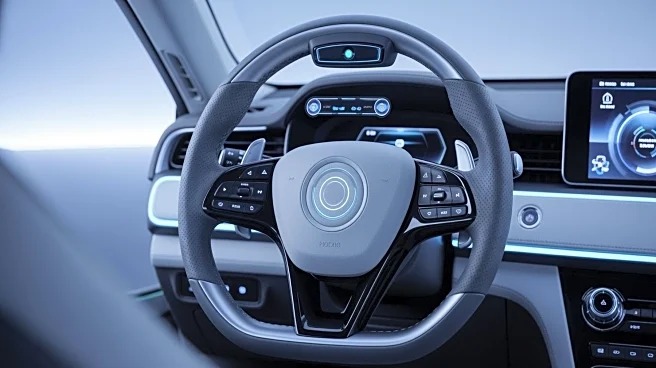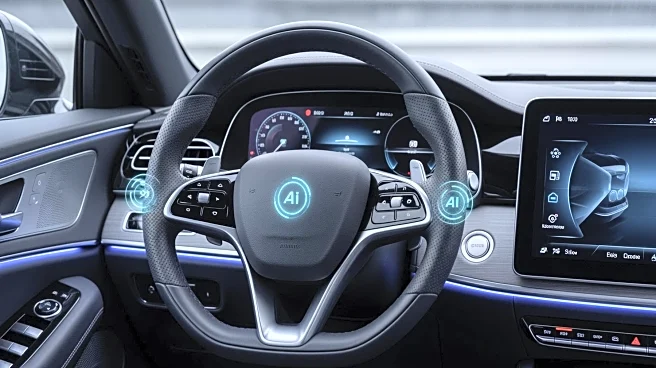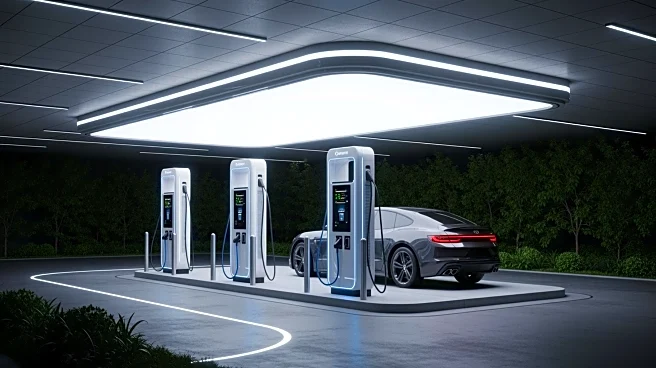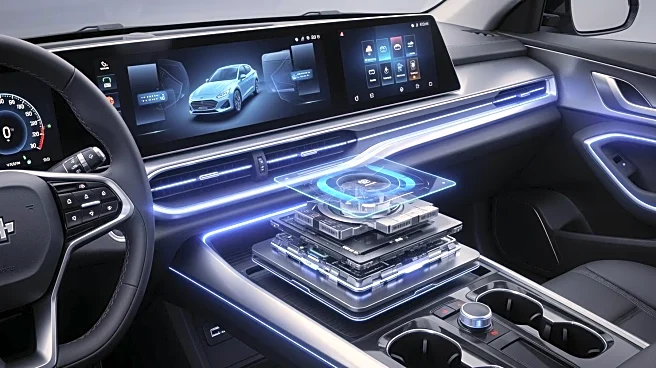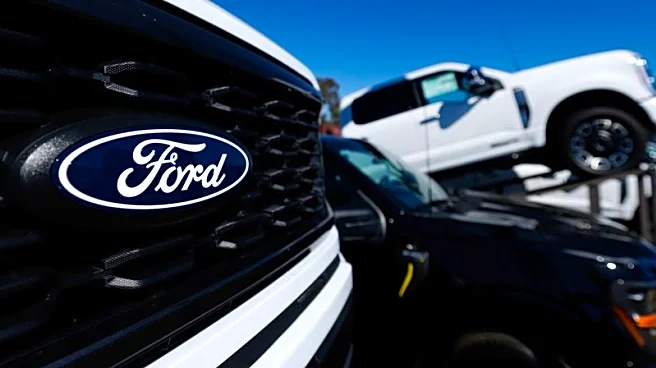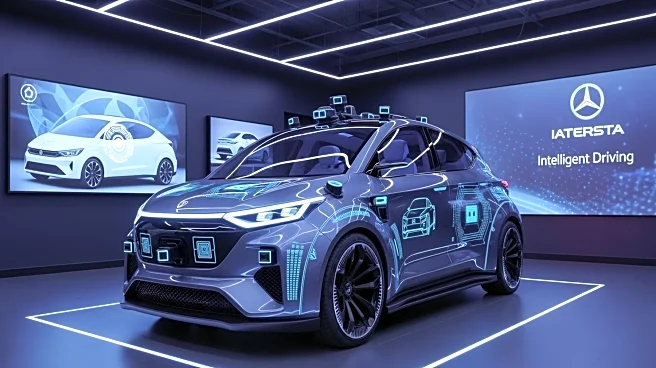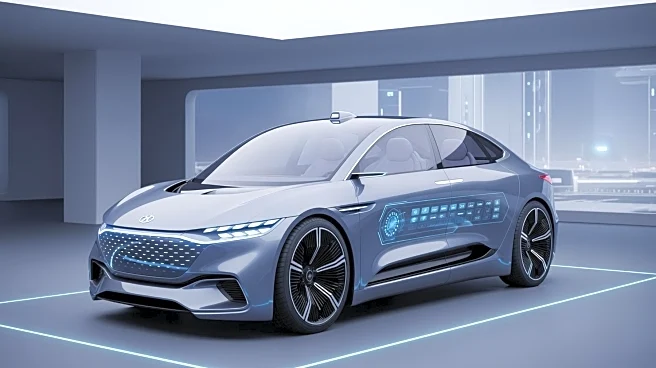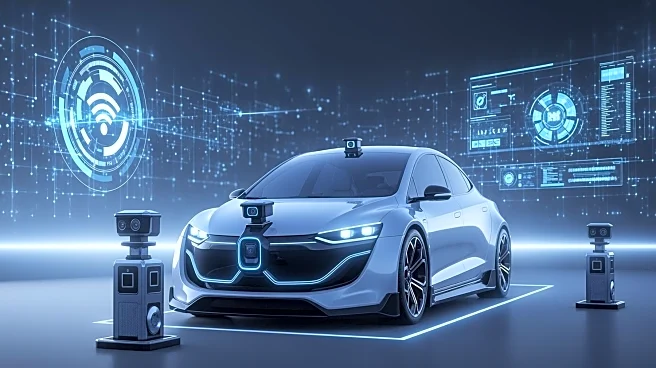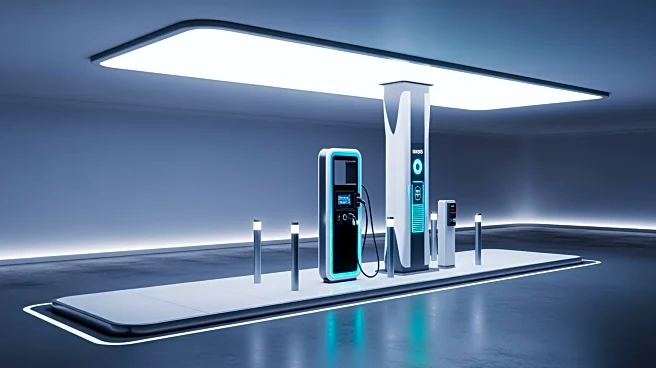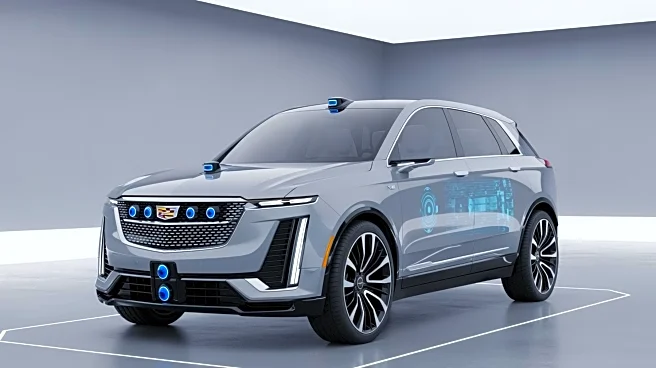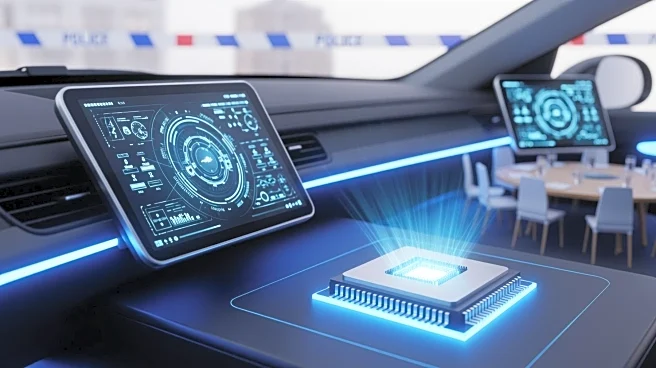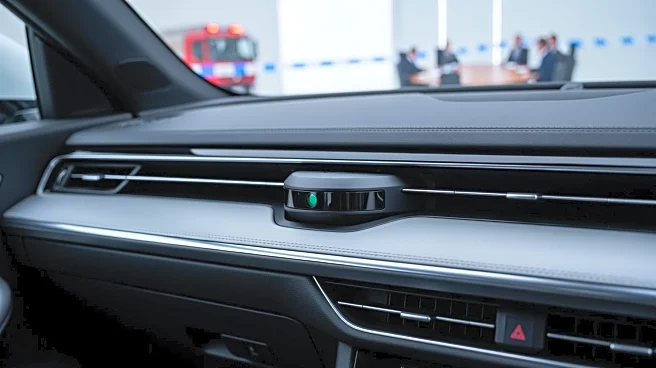What's Happening?
General Motors Co. has announced plans to introduce 'eyes-off' driving technology in its 2028 Cadillac Escalade IQ electric SUV. This development was revealed at the GM Forward media event in New York, where the company highlighted its advancements in AI,
robotics, and energy. GM has mapped 600,000 miles of hands-free driving on North American roads, with customers having driven 700 million miles using Super Cruise without any reported crashes attributed to the system. The technology benefits from Cruise's experience, which adds over 5 million fully driverless miles. GM acquired Cruise in 2016 and has invested over $10 billion into the self-driving startup. Despite previous struggles with Cruise's robotaxi deployment, GM is now focusing on personal autonomous vehicles, leveraging its Super Cruise system. The company is also scaling its robotics work at its Autonomous Robotics Center in Michigan and California, aiming to create AI that improves with each manufacturing cycle.
Why It's Important?
The introduction of 'eyes-off' driving technology by GM represents a significant step forward in the automotive industry, particularly in the realm of personal autonomous vehicles. This move positions GM as a competitor to Tesla, which has been a frontrunner in personal vehicle technology. Unlike Tesla's reliance on cameras, GM's system will utilize vision, lidar, and radar, potentially offering a more robust solution. The deployment of cobots in GM's assembly facilities is expected to enhance manufacturing efficiency and safety. This development could lead to increased consumer confidence in autonomous driving technologies, potentially accelerating their adoption. The advancements in AI and robotics also suggest a shift towards more intelligent and adaptive manufacturing processes, which could have long-term benefits for the industry.
What's Next?
GM plans to continue developing its 'eyes-off' driving technology, with the 2028 Cadillac Escalade IQ set to be the first vehicle to feature this capability. The company will likely focus on expanding its mapping of roads and refining its technology to ensure safety and reliability. As GM scales its robotics work, it may deploy more cobots across its assembly facilities, further enhancing its manufacturing capabilities. The automotive industry will be watching closely to see how GM's advancements impact consumer adoption of autonomous vehicles and influence competitors' strategies.
Beyond the Headlines
The ethical and legal implications of 'eyes-off' driving technology are significant. As GM and other automakers push towards fully autonomous vehicles, questions about liability in the event of accidents and the role of human oversight will become increasingly important. Additionally, the integration of AI and robotics in manufacturing raises concerns about job displacement and the need for workforce retraining. These developments could lead to broader discussions about the future of work and the balance between technological advancement and social responsibility.
